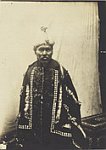Human Adaptation in the Arctic Environment
Author: Curt McManus Page 1 | Page 2 | Page 3
There are several other images which likely spring to mind when one considers the natives of the Canadian North. Igloos, kayaks, and dog sleds, for example, are some of the most recognizable and popular images associated with the arctic. But it is important to remember that each of these items was, in its own way, the direct result of humans adapting to the sub-arctic way of life. The igloo, for example, was a common form of housing which natives learned to build in the absence of other materials during the long winter months.
Historian Ken Coates notes that, as a form of housing, the Igloo dates back some two or three thousand years. And so housing clearly demonstrates one of the more obvious ways in which the northern natives adapted to their environment, and how they used the not always substantial resources of the area to house their families.
Mobility was another matter that posed its own special problems. Natives adapted in two primary ways: the dog-sled and snow-shoes.
Like the Plains natives, the Dene and Inuit often made use of one or two animals in particular for many of their daily needs. Like the buffalo, the caribou and the moose provided the Indians with many of their basic needs. The meat was eaten, antlers and bones were crafted into utensils and tools and the skins were dried and worked for clothing, footwear and boats. However, native groups who depended on these animals as a primary source for basic needs were also required to move frequently because remaining in one area could result in the over-hunting and depletion of moose or caribou in a particular area.
For centuries, then, the Innu and Dene used all of the available resources to provide for their food, hunting and transportation needs. By the time changes started to occur in the mid 19th century with increasing exploration and the development of the fur trade, the natives had long since become highly successful in adapting themselves to the environment. It was, after all, their home.
The above examples show how northern natives used the resources available to them, and how they adapted to what could, at times, be an environment which allowed for few mistakes. The Dene and Innu fed, housed, and cared for their families using only limited resources in a region which many viewed as uninhabitable. Indeed, it was for that very reason that the Canadian government for so long remained aloof from the affairs of its northern lands because, as of 1951, there were only about 15,000 Innu and Dene people living in the North West Territories and the Yukon.
While the above examples demonstrate how the natives physically adapted to the demanding arctic environment, there were other less obvious ways in which the environment impacted their lives. Historian Ken Coates wrote that one cannot understand the northern people unless one understands the environment in which they lived and how that environment played a role in their lives. To illustrate this point, it is instructive to compare northern and southern native settlements.
Coastal and Northern British Columbia natives were not as threatened by their environment as were northern natives. As such, different types of societies developed in each region. In the warmer climate of B.C., natives developed a much more static type of community which was far less mobile than the communities of the north. These native communities in B.C., for example, developed a society with a much stronger and more clearly evident central leadership structure.












